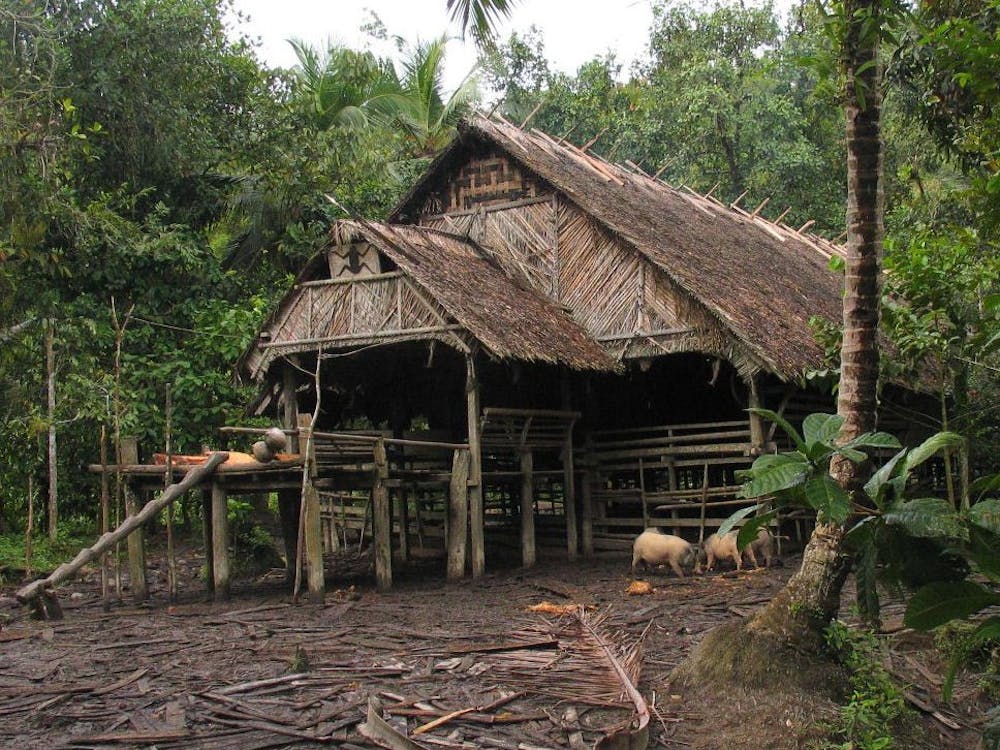We all carry a unique assemblage of bacterial colonies in and on ourselves that we began to collect before we were born and that continues to evolve as we pass through life. This “microbiome” helps us to fend off pathogenic bacteria and keeps us healthy. However, it can also cause health problems.
Maria Dominguez-Bello of New York University and her colleagues discovered that as people living in the Amazon rainforest become more urbanized, the bacteria found in their living environments become more like a person’s personal biome and less like bacteria found in nature. Dominguez-Bello presented her work at a recent meeting of the American Association for the Advancement of Science and the results were published in the Feb. 12 issue of Science Advances.
In this study, researchers evaluated homes in four locations in South America that varied in development: a secluded village in a jungle, a rural community, a mid-sized town and a large city. Microbial samples were collected by swabbing the walls and floors of kitchens, bedrooms, bathrooms and living rooms.
In the city environments, the researchers were able to determine where certain microbial wall swabs were collected. The strains of bacterial colonies revealed which area in the house the sample was from.
Although the homes in more urbanized areas typically had fewer human occupants than those in less urbanized areas, the urban homes also had increased levels of bacteria associated with the presence of humans.
In contrast, households in less urbanized areas had higher levels of environmental bacteria, such as those found in soil.
“These differences in the bacterial composition seem to stem from differences in the way the various types of dwellings are designed,” Dominguez-Bello said. “For example, in some households in the rural areas, the floors were made of dirt, and the walls were wood columns. Conversely, homes in more urbanized areas had walls and floors made of synthetic materials, and the dwellings were more isolated from the outdoor environment.”
According to Humberto Cavallin, an architect at the University of Puerto Rico and a co-author of the study, the differences in housing structure may explain the lower levels of environmental bacteria in some homes. Jungle huts that are open to the external environment housed large families, rural homes had walls that did not reach the roof and city dwellings were designed with conventional rooms with smaller families.
The researchers found that the more urbanized the dwelling, the more bacteria were on surfaces in the living environment, such as the walls and floors.
In one city home, bacteria normally found in the human mouth and in the stomach were found in swab samples of the rooms. In contrast, the jungle and rural homes contained bacteria found more commonly in soil and water.
Essentially, homes in urban areas had higher levels of microbes associated with the human presence, which could potentially imply an increased risk of the transmission of the bacteria that cause disease, the researchers said.
“But much evidence from previous studies has shown a link between a “low exposure to environmental bacteria and high incidence of allergic diseases,” Dominguez-Bello told Live Science.
This idea, sometimes referred to as the hygiene hypothesis, explains that living in relatively sterile environments may lead to the higher rates of immune and metabolic illness, such as asthma and diabetes.
The researchers admit that the study was small and limited to only one geographic location. In the future, they hope to explore this idea in a larger geographical region and examine the precise mechanisms behind the differences in bacteria compositions in different environments.
Even so, after the final results of the study were in, Dominguez-Bello was so affected by the findings that she reportedly insisted that the previously sealed windows in her office at New York University be altered so that she could open them and allow the air in the room to circulate with the outside air.





